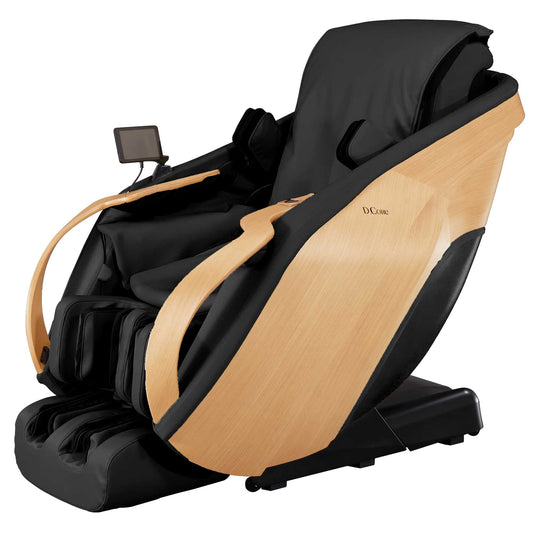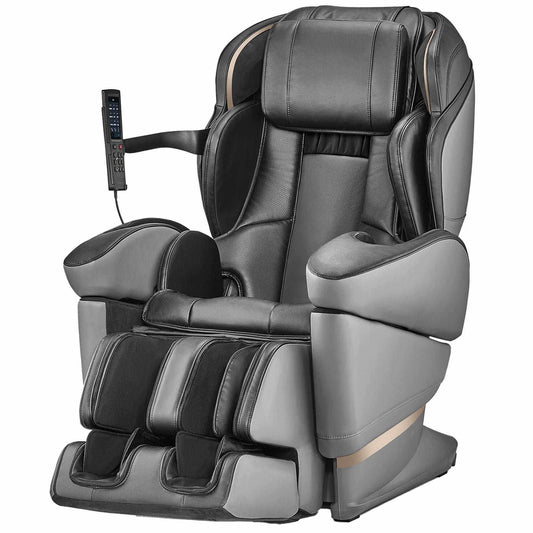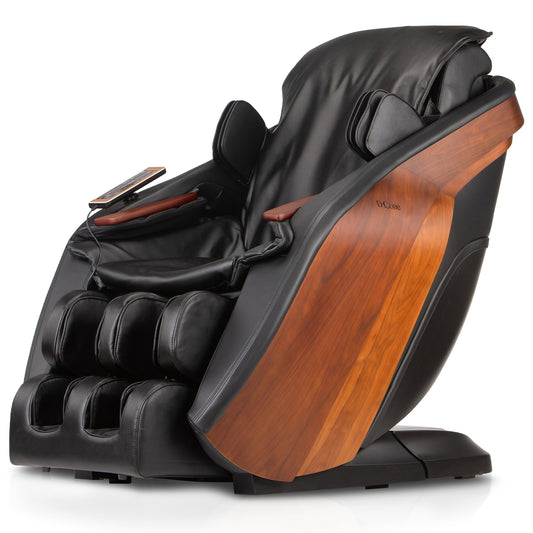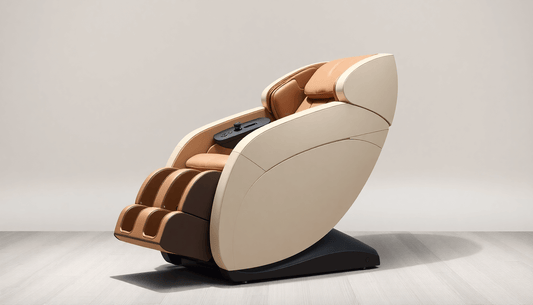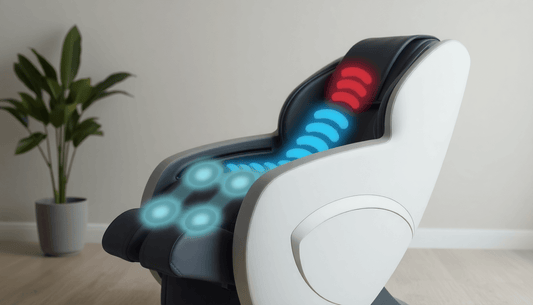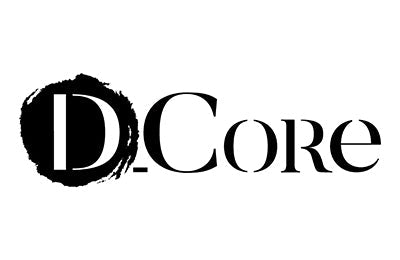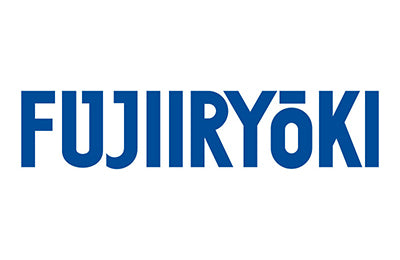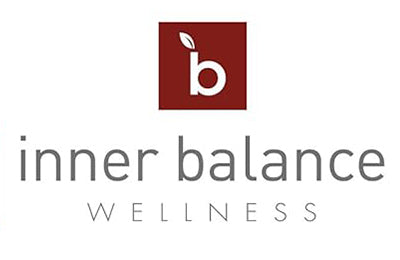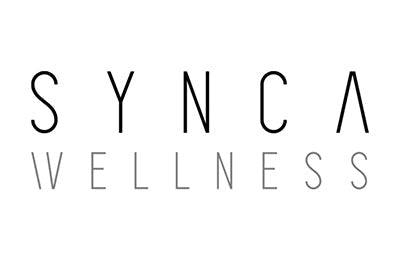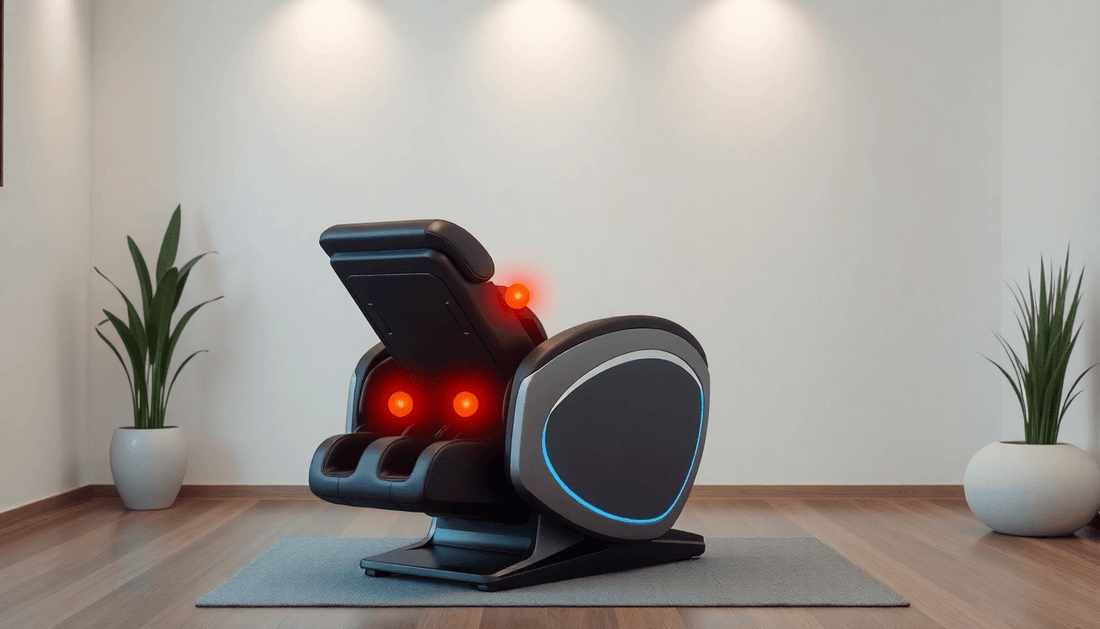
Master Essential Massage Techniques with Premium Chairs
Introduction
This extended four-part Fujiiryoki presentation provides an in-depth, actionable guide for getting maximum value from four leading Fujiiryoki massage chair models in 2025: Calm Plus, Cyber Relax AI, Cyber Relax Pro, and Cyber Relax Elite. Each day is dedicated to one model and covers the chair's strengths, recommended massage techniques, precise target zone mapping, progressive daily routines, safety considerations, troubleshooting, and measurable outcomes you can track. Along the way you will find practical tips for better recovery, improved sleep, pain reduction, and enhanced mobility, plus SEO and content recommendations to help your website rank for Fujiiryoki-related queries.
How to Use This Guide
- Read the model-specific day for practical routines and settings.
- Use the technique-to-zone mapping to create customized sessions for specific problems.
- Follow the safety and contraindications to avoid aggravating injuries or conditions.
- Track progress using simple metrics suggested in the tracking section.
Key Massage Techniques Explained
Understanding each technique helps you choose the correct mode and intensity for each body part and desired outcome.
- Swedish Massage: Long, gliding strokes that increase general circulation and promote relaxation. Best for warm-up, stress relief, and whole-body sessions.
- Deep Tissue Massage: Stronger pressure focused on deeper muscle layers and fascia. Use for chronic tightness and post-exercise recovery; avoid on acute inflammation.
- Trigger Point Massage: Short, pinpoint pressure applied to specific knots to deactivate hypersensitive spots and restore normal muscle length.
- Acupressure: Firm, sustained pressure on specific points along meridians to influence systemic responses such as stress and digestive function.
- Shiatsu Massage: Rhythmical pressure with finger or pad-like nodes, often combined with stretching and body positioning for energy balance and spinal decompression.
- Reflexology: Systematic stimulation of foot and hand reflex zones believed to correspond to organs and systems, effective for circulatory and relaxation benefits.
- Kneading: Circular or squeezing motions that mobilize soft tissue, improve local blood flow, and help release adhesions in muscle and connective tissue.
Mapping Benefits to Physiological Effects
When you select a technique, consider the physiological effect you are aiming for:
- Blood Flow Control: Swedish, Kneading, and Compression modes promote vasodilation and venous return.
- Fatigue Relief: Combination of Swedish and Reflexology speeds recovery by improving nutrient delivery and waste removal.
- Flexibility Improvement: Kneading and Deep Tissue help reduce fascial restrictions; paired stretching sequences improve ROM.
- Injury Recovery: Trigger Point and targeted Deep Tissue applied gradually can aid scar tissue remodeling and reduce adhesions, under clinician guidance.
- Muscle Therapy: Progressive intensity and varied techniques reduce hypertonicity and improve neuromuscular function.
- Pain Relief: Gentle Shiatsu, Acupressure, and carefully applied Deep Tissue can reduce nociceptive input and improve comfort.
- Spine Alignment: Traction-like decompression, along with balanced lumbar work, can reduce compressive load on vertebrae; use as adjunct to professional care.
- Tissue Therapy: Consistent Kneading and Deep Tissue support healthy collagen remodeling over time.
Day 1 — Calm Plus: Comfort-First Recovery for Everyday Wellness
The Calm Plus is optimized for daily relaxation, consistent maintenance therapy, and gentle therapeutic work. It is ideal for office workers, older adults seeking comfort, and anyone who wants frequent, low-intensity recovery sessions.
Key Features and Why They Matter
- Balanced rollers and cushioning for gentle yet effective kneading and Swedish-style strokes.
- Lower-intensity reflexology and calf compression suited for improving circulation without overstimulation.
- Quick-start programs for neck, shoulders, and lower back to make regular use effortless.
Target Zones and Specific Goals
- Neck and Shoulder: Reduce desk-posture tightness and headaches.
- Upper and Lower Back: Alleviate general lumbar strain and improve daily posture.
- Calf, Ankle, and Feet: Reduce swelling and restlessness after standing or travel.
- Hands and Wrist: Ease repetitive strain from typing or household tasks.
- Whole Body: Short sessions that reset autonomic balance and lower cortisol after work.
Progressive 4-Week Program for Calm Plus
Beginner, Intermediate, and Maintenance phases help you adapt without overdoing it.
- Weeks 1–2 Beginner: 15–20 minute sessions, 4–5 times per week. Focus on neck/shoulder Shiatsu for 5 minutes, Swedish back knead for 10 minutes, and 5 minutes reflexology for feet to boost circulation.
- Weeks 3–4 Intermediate: 20–30 minute sessions, 3–5 times per week. Add focused 10-minute lumbar kneading and extend foot reflexology to 8 minutes. Include a short breathing exercise after each session to anchor relaxation.
- Maintenance: 15–25 minutes, 3 times per week. Alternate a full-body Swedish session with a targeted neck/back program to sustain gains.
Session Walkthrough for Calm Plus
- Pre-session: Hydrate and perform 2 minutes of gentle neck rolls. Set intensity to low or medium for the first week.
- Phase 1: Neck/Shoulder Shiatsu 4–6 minutes at comfortable pressure to warm tissues.
- Phase 2: Swedish/Kneading upper and lower back 10–12 minutes to enhance blood flow.
- Phase 3: Calf and Foot reflexology/compression 5–8 minutes to reduce edema and improve venous return.
- Post-session: Gentle standing stretch for 2 minutes and note any changes in pain or mobility in a journal.
Settings, Accessories and Troubleshooting for Calm Plus
- Intensity: Start at medium for the back; lower for neck. Gradually increase if you do not feel any sensitivity or discomfort.
- Accessories: Use a small lumbar pillow for additional lower-back support if you have mild lordosis.
- Troubleshooting: If you feel increased pain after a session, decrease intensity and shorten duration. If pain persists, stop using the chair and consult a clinician.
Day 2 — Cyber Relax AI: Smart, Adaptive Healing for Personalized Results
Cyber Relax AI stands out with automated body-scanning, adaptive pressure modulation, and user profiling. It is particularly effective when you want the chair to learn and adapt to your chronic tension patterns.
Why Adaptive AI Matters
- Body mapping ensures roller placement matches your anatomy rather than a generic template.
- Adaptive intensity reduces the risk of overworking sensitive areas while concentrating effort where needed.
- AI-driven program evolution saves time and increases compliance by delivering noticeable results faster.
Target Zones and Clinical Use Cases
- Neck and Head: Use AI-enabled Shiatsu sequences for chronic tension-type headaches and smartphone-related strain.
- Lower Back and Spine: AI adapts lumbar contours and selects traction-like sequences to complement chiropractic or PT care.
- Knee and Thigh: Adaptive compression and kneading can reduce stiffness and post-exercise soreness in the legs.
Advanced 6-Week Protocol for Cyber Relax AI
Designed for measurable improvement in chronic tension and functional gains.
- Weeks 1–2 Baseline: Let the chair scan and learn. Use the recommended AI session daily for 20 minutes. Record pain scores and sleep quality each morning.
- Weeks 3–4 Optimization: Increase to 25–30 minute sessions 4–5 times weekly. Add targeted trigger point sequences for shoulders and lower back twice weekly.
- Weeks 5–6 Performance: Use mixed sessions – one deep-tissue focused day, one relaxation-focused day, and one reflexology day. Expect improvements in range of motion and lower daily pain scores if paired with light stretching.
Session Walkthrough for Cyber Relax AI
- Initial Scan: Allow the chair to scan. Confirm comfort options suggested by AI.
- Focused Work: Let AI prioritize the highest-tension zones. Observe where it spends the most time and mirror its focus with manual stretches post-session.
- Recovery Phase: Finish with reflexology and compression to flush metabolic byproducts and encourage relaxation.
Safety Notes and Clinical Considerations
- AI recommendations are designed for comfort but cannot replace diagnostics. If you have recent fractures, deep vein thrombosis, or serious neuropathy, avoid intensive sessions and consult a physician.
- For post-operative patients, get written clearance before using AI deep-tissue programs.
Day 3 — Cyber Relax Pro: Powerful Performance for Active Lifestyles
Cyber Relax Pro targets athletes and highly active users who require aggressive recovery and faster tissue repair. Its programs are engineered to accelerate removal of metabolic waste, increase tissue perfusion, and break down adhesions.
Pro-Level Features
- Higher torque rollers and more aggressive kneading options.
- Longer thigh and calf coverage for sport-specific recovery.
- Programs designed to pair with training cycles and recovery windows.
Target Zones and Specific Athletic Goals
- Thighs and Hamstrings: Reduce delayed onset muscle soreness and improve sprint recovery.
- Calf and Achilles area: Aid runners and cyclists with focused compression and trigger point release.
- Lower Back and Gluteal region: Support trunk stability and reduce compensatory pain patterns.
Post-Training Recovery Plan
- Immediate Post-Workout (first 2 hours): 10 minutes light Swedish to increase circulation and 10 minutes compression on calves/feet to reduce swelling.
- 24–48 Hours Post-Workout: Combination deep tissue and kneading session of 20–30 minutes to address tightness and adhesions.
- Maintenance/Peak Weeks: Use Pro 3–5 times weekly with alternating intensity days to avoid over-recovery and fatigue.
Session Walkthrough for Cyber Relax Pro
- Warm-Up: 5–8 minutes Swedish to mobilize tissue.
- Main: 20 minutes Deep Tissue and Trigger Point work on sport-specific zones.
- Cool Down: 5–10 minutes light kneading and reflexology to help tissue return to homeostasis.
- Post-Session: Foam roll or perform dynamic mobility drills for 5–10 minutes to cement gains.
When and How to Reduce Intensity
- If acute inflammation, recent strain, or sharp pain is present, reduce intensity or avoid deep tissue for 72 hours.
- For novice users, treat Pro like an advanced tool and initially follow Calm Plus or AI adaptive sessions before moving to Pro levels.
Day 4 — Cyber Relax Elite: Comprehensive Therapy for Chronic Conditions
The Elite model is engineered to combine long-duration programs, refined pressure modulation, and more nuanced spinal coverage. It is best suited for people managing chronic pain, structural imbalances, or those seeking the deepest therapeutic experience available in a home chair.
Elite-Level Capabilities
- Extended roller track and precise lumbar contouring for targeted spine work.
- Integrated traction-like sequences to reduce vertebral compression and relieve nerve impingement symptoms in some cases.
- Advanced reflexology and whole-body sequences that simulate hands-on therapy sessions lasting up to 60 minutes.
Chronic Pain Management Protocol (8–12 Weeks)
- Phase 1 Weeks 1–4: Frequent low-to-moderate intensity sessions 4–6 days per week. Priority on gentle traction, acupressure, and relaxation to reduce baseline pain sensitivity.
- Phase 2 Weeks 5–8: Gradual introduction of deeper sessions 2–3 times weekly paired with rehabilitative exercises recommended by a clinician.
- Phase 3 Weeks 9–12: Maintenance with mixed intensities, longer sessions for sleep quality, and periodic reassessment of function and pain scales.
Session Walkthrough for Cyber Relax Elite
- Initial: Gentle acupressure and scanning for 8–10 minutes to prime the nervous system.
- Main: 25–35 minutes mixed Shiatsu, Deep Tissue, and Traction-like sequences focused on the lumbar and thoracic spine.
- Closure: 10–12 minutes reflexology and full-leg compression to reduce sympathetic tone and support restorative sleep.
Contraindications and Safety for All Models
- Avoid vigorous massage over recent fractures, open wounds, or sites of acute infection.
- People with deep vein thrombosis, uncontrolled hypertension, or certain heart conditions should consult a physician before use.
- Pregnancy: Use with caution and avoid intense abdominal or pelvic compression; seek medical approval before regular use.
- Neuropathy or sensory loss: Reduce intensity and consult a clinician to avoid tissue damage due to impaired sensation.
Tracking Progress: Metrics That Matter
Objective tracking increases adherence and helps you understand what works. Track these metrics weekly.
- Resting pain scale 0–10 before a session.
- Range of motion measures such as forward flexion or shoulder reach.
- Sleep quality rating 0–10 and total sleep hours.
- Perceived recovery after workouts using a simple 1–5 scale.
- Frequency of headache or stiffness episodes per week.
Maintenance and Care for Longevity
- Wipe external upholstery weekly with manufacturer-approved cleaner and a soft cloth.
- Perform monthly inspection of moving components and contact support for audible changes in roller operation.
- Keep firmware updated if the model supports software updates to maintain AI accuracy and safety profiles.
- Use a surge protector to protect electronics and prolong motor life.
SEO and Content Strategy to Rank Highly for Fujiiryoki Topics
Beyond high-quality content, structure and technical SEO are essential for ranking. Below are concrete content and SEO steps you can implement.
On-Page Content Structure
- Create a pillar page that links to four dedicated model pages, one for each daily deep dive.
- Use H1 for the main title and H2 for each major section. Include H3 subheaders for routines, settings, and safety if needed.
- Write 1500–3000 words per model page; ensure the pillar page summarizes and links out to each model for topic authority.
- Include frequently asked question sections and structured data to gain rich snippets.
Keyword Strategy and Examples
- Primary keywords: Fujiiryoki massage chair, Fujiiryoki Calm Plus, Cyber Relax AI, Cyber Relax Pro, Cyber Relax Elite.
- Long-tail keywords: Fujiiryoki Calm Plus neck massage benefits, Cyber Relax AI body scan settings, best Fujiiryoki program for runners, Fujiiryoki Elite spinal traction benefits.
- LSI keywords: shiatsu massage chair, reflexology foot programs, deep tissue massage chair, massage chair recovery for athletes, home massage chair for chronic back pain.
Technical SEO and UX Recommendations
- Page speed: Optimize images, use lazy loading, and serve compressed assets to reduce time to interactive.
- Mobile-first: Ensure responsive design and readable buttons for program controls on small screens.
- Schema markup: Implement FAQ schema, Product schema for model pages, and HowTo schema for step-by-step routines to improve rich results.
- Internal linking: Link commonly from the pillar page to the model pages and from each model page to related accessory, comparison, and troubleshooting pages.
Content Enhancements That Boost Engagement
- How-to videos showing recommended sessions for each model and body part; transcript the videos for SEO value.
- Downloadable PDF routines for Calm Plus, Cyber Relax AI, Cyber Relax Pro, and Elite that users can print and keep next to their chair.
- User testimonials and case studies that mention improvement in pain scores or athletic recovery metrics with specific timelines.
- Interactive tool allowing users to choose a target zone and desired outcome and receive a recommended session template for each model.
Content Promotion and Backlink Opportunities
- Partner with physical therapists and sports medicine bloggers for expert quotes and guest posts.
- Publish data-driven case studies showing quantified improvements in recovery or sleep to earn links from health sites.
- Create sharable assets like infographics mapping techniques to benefits and target zones for social media outreach.
Expanded Frequently Asked Questions
- Q: Can a Fujiiryoki chair replace a visit to a massage therapist? A: For routine maintenance and many chronic tension patterns, home use is highly beneficial. However, a hands-on therapist provides manual techniques and clinical assessments a chair cannot replicate. Use the chair as a complement, not a complete replacement for clinical care when needed.
- Q: How often should athletes use the Pro model? A: Frequency depends on training cycles. For heavy training weeks, 3–5 sessions including one deeper recovery session and lighter pre- or post-workout sessions is common. Always coordinate with a sports professional for competition tapering.
- Q: Which model is best for sleep improvement? A: Elite has the most comprehensive relaxation cycles and longer duration programs that support parasympathetic activation and sleep hygiene, but Calm Plus and AI are excellent for nightly routines too.
- Q: What to do if my chair causes bruising in a pressure area? A: Immediately reduce intensity and duration; allow several days before reintroducing mild sessions. If bruising persists or you have bleeding disorders, stop use and consult a healthcare provider.
- Q: How should the chair be used in a household with different body sizes? A: Use adjustable programs and body scan features when available. Save separate user profiles for different household members to preserve settings and intensity preferences.
Sample Social Post Ideas to Promote Each Model
- Calm Plus: Share a 60-second video of a 15-minute evening routine emphasizing stress relief and improved sleep.
- Cyber Relax AI: Post a before-and-after mobility reel showing scan results with short testimonials about reduced stiffness.
- Cyber Relax Pro: Publish athlete testimonials and short clips of post-workout recovery sessions that highlight reduced soreness.
- Cyber Relax Elite: Share longer-form content like a 10-minute guided recovery protocol and a downloadable 8-week chronic pain management PDF.
Final Notes and Best Practices
- Start slow and build session duration and intensity over days to weeks; this reduces the risk of delayed soreness or overstimulation.
- Pair chair therapy with hydration, sleep, and appropriate exercise for holistic improvements in recovery and function.
- Document outcomes and adjust routines based on measurable changes such as pain reduction, improved sleep, and increased range of motion.
- Always prioritize safety: if in doubt about applying deep tissue or trigger point work at home, consult a physical therapist or physician.
Conclusion
This expanded four-part guide provides model-specific routines, technique explanations, and a practical roadmap to using Fujiiryoki massage chairs for both day-to-day wellness and targeted therapeutic goals. Whether you choose the Calm Plus for maintenance, Cyber Relax AI for personalized sessions, Cyber Relax Pro for athletic recovery, or Cyber Relax Elite for chronic care, these actionable protocols and tracking strategies will help you optimize outcomes and measure real progress over time.
Call to Action
Pick one model and a single target zone to focus on for the next two weeks. Use the recommended session templates, track the simple metrics suggested, and adjust intensity based on your responses. If you plan to use the chair for rehabilitation or you have a complex medical history, obtain clearance from your healthcare provider before beginning a new protocol.
